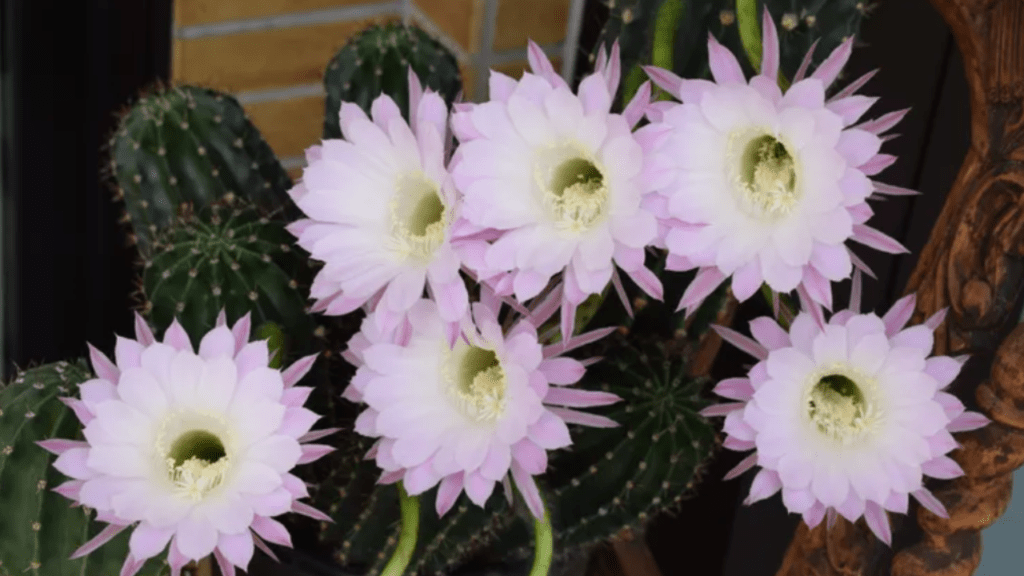
How to Grow and Maintain a Healthy Cereus Plant
Cereus plants are unique and beautiful additions to any indoor or outdoor garden. In order to ensure that your cereus plant thrives and remains healthy, it’s important to follow specific guidelines for watering, sunlight, and soil maintenance. This article will provide you with the best practices for growing and maintaining a healthy cereus plant, as well as tips for addressing common issues that may arise. By following these guidelines, you can enjoy the beauty of your cereus plant for years to come.
Table of Contents
ToggleUnderstanding the Cereus Plant
Cereus plants are a type of cactus that belong to the Cactaceae family. These plants are known for their unique and stunning flowers that bloom at night. They are native to desert regions and are well adapted to dry and arid conditions. Cereus plants come in a variety of species, each with their own specific needs and characteristics. It’s important to understand the specific type of cereus plant you have in order to provide the best care for it.
How to Grow and Maintain a Healthy Cereus Plant
In order to grow and maintain a healthy cereus plant, it’s important to provide the right conditions for its growth. Cereus plants thrive in well-draining soil, so be sure to use a cactus or succulent mix when planting or repotting. These plants also require plenty of sunlight, so place them in a sunny spot where they can receive at least 6-8 hours of sunlight per day.
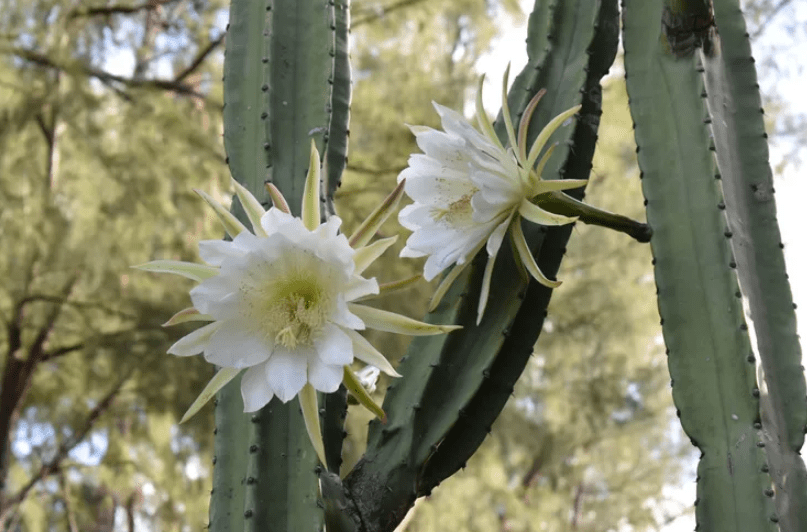
When it comes to watering, it’s important to allow the soil to dry out completely between waterings. Overwatering can lead to root rot, so it’s best to water sparingly and only when the soil is dry. During the growing season, from spring to fall, you can fertilize your cereus plant with a balanced cactus fertilizer to promote healthy growth.
Common Issues and Tips for Addressing Them
One common issue that may arise with cereus plants is the presence of pests such as spider mites or scale insects. You can address this by using neem oil or insecticidal soap to control the infestation. Another issue may be yellowing or wrinkling of the stems, which can be a sign of underwatering. In this case, be sure to water your plant and adjust your watering schedule as needed.
By following these guidelines for growing and maintaining a healthy cereus plant, you can ensure that your plant thrives and continues to grace your garden with its unique beauty. With the right care, your cereus plant can be a stunning and low-maintenance addition to your indoor or outdoor space.
Ideal Growing Conditions for Cereus Plants
Light Requirements
Detail the best lighting conditions for healthy growth.
Cereus plants thrive in bright, indirect light. They should be placed in a location where they can receive at least 6 hours of sunlight per day, but they should be protected from direct, intense sunlight, especially during the hottest part of the day. In the winter, when the sun is less intense, you can place your cereus plant in a spot where it can receive direct sunlight for a few hours each day. Proper lighting conditions are crucial for healthy growth and flowering of cereus plants. If your plant is not receiving enough light, it may become leggy and have fewer flowers. On the other hand, if it receives too much direct sunlight, the stems and flowers may become scorched. It’s important to find the right balance of light for your cereus plant to ensure its optimal growth and blooming.
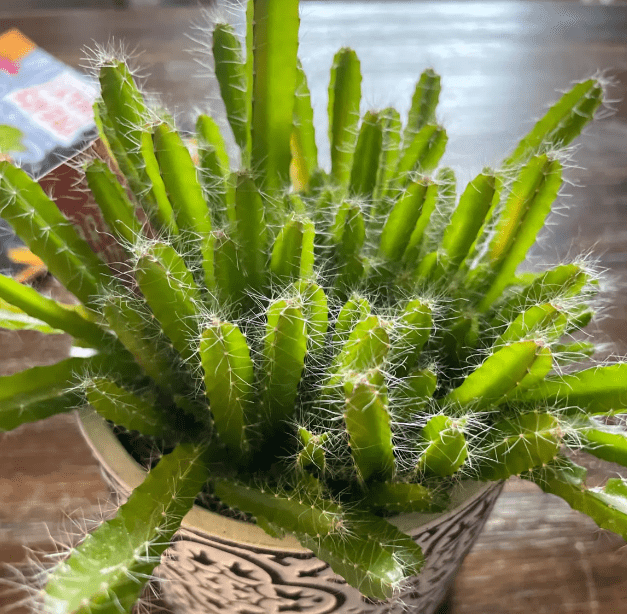
Soil Type and Preparation
Explain the importance of well-draining soil and how to prepare it.
Well-draining soil is essential for the health and growth of cereus plants. This type of soil allows for proper aeration and prevents water from pooling around the roots, which can lead to root rot. To prepare well-draining soil for your cereus plant, you can start by mixing equal parts of potting soil, perlite, and coarse sand. This combination will create a light and airy soil that allows excess water to drain away easily. Additionally, you can add some organic matter, such as compost, to improve the soil’s fertility and structure. It’s important to ensure that the soil is well-draining before planting your cereus to promote healthy root development and overall growth. Remember to water your cereus plant only when the top inch of the soil is dry to the touch to prevent overwatering and waterlogged soil.
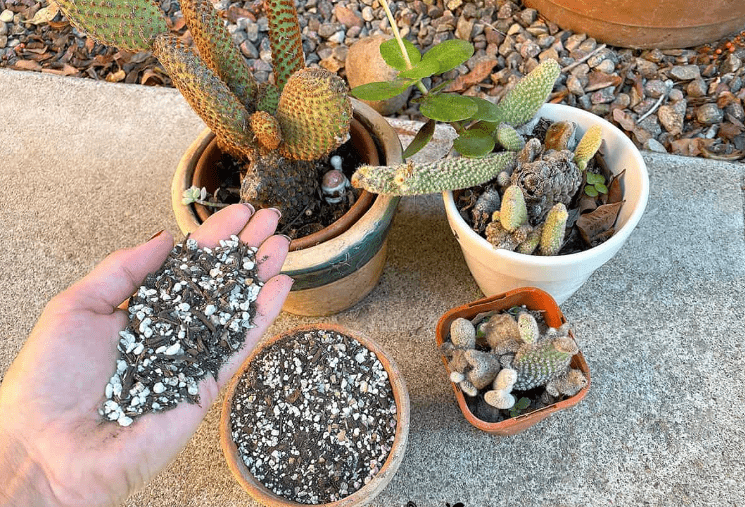
Temperature and Humidity
Discuss the optimal temperature range and humidity levels for Cereus plants.
Cereus plants thrive in temperatures between 60-90 degrees Fahrenheit (15-32 degrees Celsius), making them suitable for indoor and outdoor cultivation in many regions. They prefer a moderate to high humidity level, around 40-60%, which can be achieved by misting the plants or placing a humidifier nearby. It’s important to protect cereus plants from extreme temperature fluctuations and drafts, as they can be sensitive to sudden changes in their environment. In colder climates, it’s best to bring the plants indoors during the winter months to ensure they stay within their optimal temperature range. By providing the right temperature and humidity conditions, you can help your cereus plant to thrive and flourish. Remember to monitor these factors and make adjustments as needed to support the growth and health of your plant.
Step-by-Step Guide to Planting Cereus
Choosing the Right Location
Tips on selecting the best spot for planting, whether indoors or outdoors.
When selecting the best spot for planting your Cereus plant, whether indoors or outdoors, there are a few important factors to consider. First, consider the temperature and humidity levels. Cereus plants thrive in temperatures between 60-90 degrees Fahrenheit (15-32 degrees Celsius), making them suitable for indoor and outdoor cultivation in many regions. They prefer a moderate to high humidity level, around 40-60%, which can be achieved by misting the plants or placing a humidifier nearby. It’s important to protect cereus plants from extreme temperature fluctuations and drafts, as they can be sensitive to sudden changes in their environment. In colder climates, it’s best to bring the plants indoors during the winter months to ensure they stay within their optimal temperature range. By providing the right temperature and humidity conditions, you can help your cereus plant to thrive and flourish. Additionally, it’s important to choose a location that receives adequate sunlight. Cereus plants require bright, indirect light to grow well. Ideally, they should be placed in a spot that receives at least 6-8 hours of sunlight per day. Whether you are planting your Cereus indoors or outdoors, be sure to choose a location that meets these important requirements to support the growth and health of your plant.
Planting Process
Step-by-step instructions for planting a Cereus plant, including spacing and depth.
When planting a Cereus plant, it’s important to choose a location that receives adequate sunlight. The plant requires bright, indirect light and should be placed in a spot that receives at least 6-8 hours of sunlight per day. Before planting, ensure that the soil is well-draining and slightly acidic. When it comes to spacing, Cereus plants should be placed at least 2-3 feet apart from each other to allow for proper air circulation and growth. When planting, dig a hole that is just deep enough for the plant’s root ball and place the plant in the hole, covering the roots with soil. Water the plant thoroughly after planting to help settle the soil and provide moisture to the roots. It’s important to protect Cereus plants from extreme temperature fluctuations and drafts, as they can be sensitive to sudden changes in their environment. In colder climates, it’s best to bring the plants indoors during the winter months to ensure they stay within their optimal temperature range. By providing the right temperature and humidity conditions, you can help your cereus plant to thrive and flourish. Whether you are planting your Cereus indoors or outdoors, be sure to choose a location that meets these important requirements to support the growth and health of your plant.
Transplanting Tips
How to successfully transplant a Cereus plant if needed.
Cereus plants can be successfully transplanted with the right care and preparation. When it comes to spacing, Cereus plants should be placed at least 2-3 feet apart from each other to allow for proper air circulation and growth. When planting, dig a hole that is just deep enough for the plant’s root ball and place the plant in the hole, covering the roots with soil. Water the plant thoroughly after planting to help settle the soil and provide moisture to the roots. It’s important to protect Cereus plants from extreme temperature fluctuations and drafts, as they can be sensitive to sudden changes in their environment. In colder climates, it’s best to bring the plants indoors during the winter months to ensure they stay within their optimal temperature range. By providing the right temperature and humidity conditions, you can help your cereus plant to thrive and flourish. Whether you are planting your Cereus indoors or outdoors, be sure to choose a location that meets these important requirements to support the growth and health of your plant. When transplanting, take care to minimize root disturbance and provide plenty of water and sunlight to help the plant adjust to its new environment. With proper care and attention, your Cereus plant should thrive in its new location.
Essential Care Tips for a Healthy Cereus Plant
Watering Schedule
Discuss the ideal watering routine, considering seasonal changes.
The ideal watering routine for Cereus plants depends on seasonal changes. During the growing season in spring and summer, it’s important to water the plant thoroughly after planting to help settle the soil and provide moisture to the roots. As the weather warms up, you may need to increase the frequency of watering to ensure the plant is receiving enough moisture. However, be mindful not to overwater, as this can lead to root rot.
In the fall and winter, it’s important to adjust the watering routine to account for cooler temperatures and reduced sunlight. Cereus plants may require less frequent watering during these months, as they may enter a dormant period. It’s also important to protect the plants from extreme temperature fluctuations and drafts, as they can be sensitive to sudden changes in their environment.
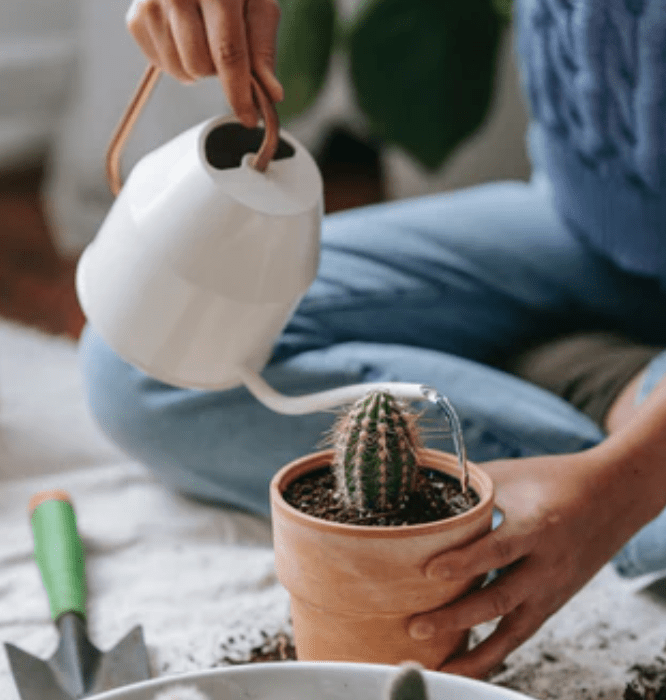
In colder climates, it’s best to bring the plants indoors during the winter months to ensure they stay within their optimal temperature range. By providing the right temperature and humidity conditions, you can help your cereus plant to thrive and flourish. Whether you are planting your Cereus indoors or outdoors, be sure to choose a location that meets these important requirements to support the growth and health of your plant.
When transplanting, take care to minimize root disturbance and provide plenty of water and sunlight to help the plant adjust to its new environment. With proper care and attention, your Cereus plant should thrive in its new location. Remember to adjust your watering routine according to seasonal changes to ensure the health and vitality of your plant.
Fertilization
Explain the best fertilization practices, including type and frequency.
Fertilization is an important part of plant care, including for Cereus plants. The best type of fertilizer to use is a balanced, all-purpose fertilizer. This should be applied at half strength every two to four weeks during the growing season, which is typically in the spring and summer months. It’s important not to over-fertilize, as this can cause damage to the plant. During the fall and winter months, you can reduce the frequency of fertilization to once a month or even less, as the plant’s growth slows down during this time. It’s also important to water the plant before and after applying fertilizer to prevent root burn. Following these fertilization practices will help to ensure the health and growth of your Cereus plant.
Pruning and Maintenance
Guide on pruning to maintain shape and health, and how to handle any necessary maintenance tasks.
Pruning is an important aspect of plant care, and it is essential for maintaining the shape and health of Cereus plants. The best time for pruning is during the growing season, typically in the spring and summer months. This is when the plant is actively growing, and pruning can help to encourage new growth and maintain a desirable shape. When pruning, it is important to use clean, sharp pruning shears to avoid damaging the plant. Remove any dead or damaged branches, as well as any overgrown or unruly growth to promote a more compact and attractive appearance. Additionally, it is important to handle any necessary maintenance tasks, such as repotting or pest control, to ensure the overall health of the plant. By following these guidelines for pruning and maintenance, you can help your Cereus plant thrive and continue to enhance the beauty of your indoor or outdoor space.
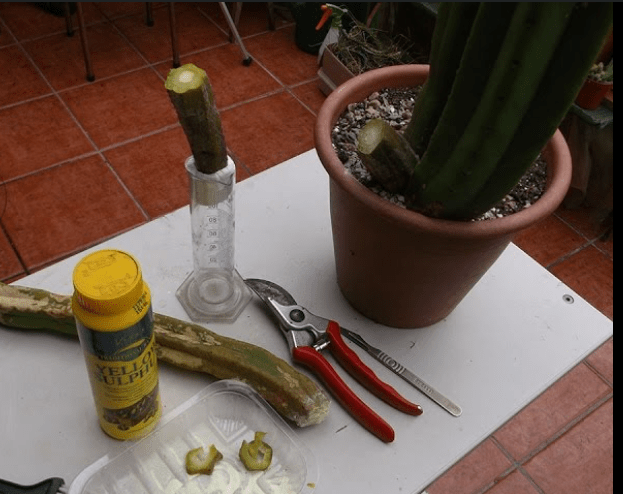
Common Pests and Problems
Identifying Common Pests
Overview of common pests that affect Cereus plants and how to identify them.
Cereus plants are susceptible to a few common pests that can affect their health and appearance. One of the most common pests is the mealybug, which appears as small, white, cottony masses on the plant. They suck the sap from the plant, causing wilting and yellowing of the leaves. Another common pest is the spider mite, which can be identified by the fine webbing they produce on the plant. They also feed on the plant sap, causing discoloration and stunted growth. It is important to regularly inspect your Cereus plant for any signs of pest infestation so that you can take action to prevent further damage. Keep an eye out for any unusual spots, webs, or cottony masses on the plant, as well as any signs of wilting or discoloration. If you notice any of these signs, it is important to address the pest problem promptly to prevent it from spreading to other plants. By identifying and addressing common pest issues, you can help your Cereus plant stay healthy and vibrant.
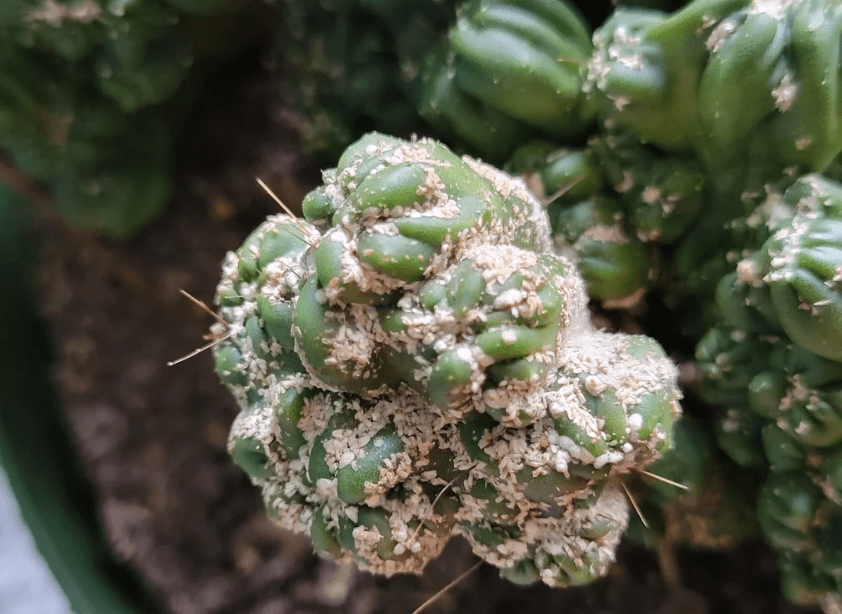
Disease Prevention and Treatment
Discuss common diseases and provide preventive measures and treatment options.
Cereus plants are susceptible to a few common diseases, including root rot, stem rot, and fungal infections. To prevent these diseases, it is important to avoid overwatering the plant and ensure proper drainage. Additionally, planting the Cereus in well-draining soil and providing adequate air circulation can help prevent fungal infections. If you notice any signs of disease, such as wilting, yellowing, or unusual spots on the plant, it is important to address the issue promptly. You can treat fungal infections with a fungicide, and root and stem rot can be prevented by adjusting the plant’s watering schedule and ensuring proper drainage. Regularly inspecting and caring for your Cereus plant can help prevent and address common diseases, keeping your plant healthy and vibrant.
Propagating Cereus Plants
Is a great way to expand your plant collection and share the beauty of these unique plants with others. There are a few different methods for propagating Cereus plants, including stem cuttings and seeds. To propagate from stem cuttings, simply take a healthy cutting from the parent plant and allow it to callous over for a few days. Then, plant the cutting in well-draining soil and water it lightly. Keep the soil moist but not waterlogged, and provide the cutting with bright, indirect light. In a few weeks, roots should start to develop, and you will have a new Cereus plant.
Another option for propagating Cereus plants is by using seeds. Collect the seeds from a mature Cereus plant and plant them in well-draining soil. Keep the soil consistently moist and provide the seeds with warmth and light. With patience, the seeds will germinate and grow into new Cereus plants.
Propagating Cereus plants can be a fun and rewarding experience, allowing you to share the beauty of these plants with others and expand your own collection. With the right care and attention, you can successfully propagate Cereus plants and enjoy the beauty of these unique plants in your home or garden.
Conclusion
In conclusion, growing and maintaining a healthy cereus plant requires proper care and attention to its specific needs. By following the tips and best practices outlined in this article, you can ensure that your cereus plant thrives and remains healthy for years to come. Remember to water it properly, provide adequate sunlight, and use the right type of soil to support its growth. Additionally, be aware of common issues and know how to address them promptly to keep your cereus plant in optimal condition. With the right care, your cereus plant can become a beautiful and thriving addition to your home or garden.
Frequently asked questions And Answer
Cereus plants thrive in bright, indirect sunlight and well-draining soil. They prefer temperatures between 70-90°F during the day and 60-70°F at night.
Cereus plants do not require frequent watering. It is best to let the soil dry out completely between waterings, and then water thoroughly, allowing excess water to drain away.
Cereus plants do not require much maintenance, but they do benefit from occasional fertilization during the growing season. Use a balanced, water-soluble fertilizer diluted to half strength.
Cereus plants typically bloom at night and are often triggered by cooler temperatures and shorter daylight hours. To encourage blooming, provide a period of cooler temperatures (55-60°F) and reduce watering in the fall and winter.
Cereus plants are susceptible to mealybugs, scale insects, and spider mites. To prevent infestations, regularly inspect your plant and treat any pests promptly. Overwatering can also lead to root rot, so it’s important to ensure proper drainage.
Yes, cereus plants can be propagated from stem cuttings. Allow the cutting to callus for a few days, then plant it in well-draining soil and keep it lightly moist until roots develop.
Cereus plants are non-toxic to humans and pets, making them a safe choice for households with animals.
Depending on the species, cereus plants can grow to be quite large, sometimes reaching heights of 20 feet or more. It’s important to provide adequate space and support for these tall, climbing plants.
